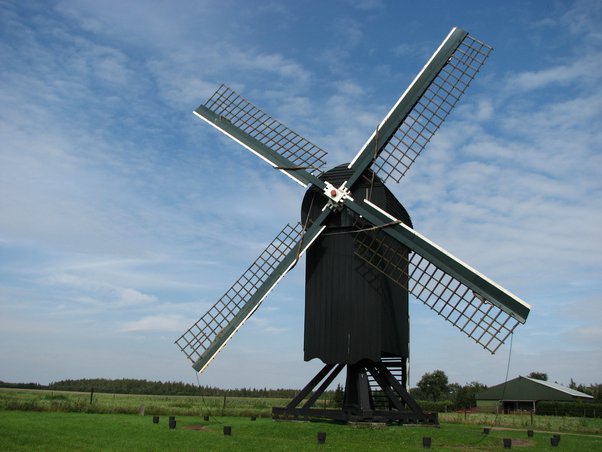Why do windmills turn clockwise?
That one intrigued me!
My answer. Warning: High bogusity.
It makes sense for engineering standardization that they all go one way.
Why clockwise? European windmills historically tended to go clockwise. So probably it inherited from that.
So, why for them?
My totally unsupported guess is that people got used to clockwise for two reasons. First, the clock does that as a skewmorphism for a sun dial. In the northern hemisphere a sun dial mark progresses clockwise.
Also, if you watch a cart go by, the wheel is seen to be turning clockwise. Maybe that was the predominant rotating thing that people saw and grew accustomed to. Edit: Only if it’s left to right. Which I was assuming was the view if carts kept right, as I think was the Roman practice and the prevailing way. Maybe that’s wrong.
But on the other hand, most people are right-handed so I assume they’d preferably turn a grist mill counterclockwise. And in Europe the stars rotate counterclockwise about the North Star. So perhaps my explanation is specious and any choice could have been justified. It had to be something.
Oh wait!! A grist mill attached to a windmill will rotate counterclockwise if the windmill is clockwise and there are an odd number of gears. And looking it up, that turns out to be the most common design! So if you do push the wheel with human labor, it will be counterclockwise. A habit people probably developed long before windmills and even before using animals. Huh.

@tipu curate
Upvoted 👌 (Mana: 3/9) Get profit votes with @tipU :)